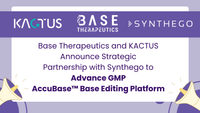Focusing on the Neuroendocrine Tumor Target SEZ6
By Yujiao Zhang
Neuroendocrine neoplasms/tumors (NENs or NETs) are rare tumors that originate from specialized cells called neuroendocrine cells. These cells have characteristics of both hormone-producing endocrine cells and nerve cells. Compared to typical tumors, NETs can affect various organs because neuroendocrine cells are found throughout the body and can produce different types of hormones. They are commonly found in the pancreas, gastrointestinal tract, lungs, thymus, adrenal glands, prostate, etc., and exhibit high heterogeneity and complexity. Although NETs have long been considered a rare disease, their incidence has increased dramatically in recent years. According to statistics, the annual age-adjusted incidence of NETs in the United States was 1.09 per 100,000 persons in 1973 and increased to 6.98 per 100,000 persons by 2012 [1], drawing widespread attention to NETs. SEZ6 is involved in the formation of neuronal dendrites and regulates neuronal cell-to-cell signaling. It is closely related to the progression of NETs and is a potential drug target for NETs.
SEZ6
SEZ6 (Seizure Related Gene 6) is a single transmembrane domain protein that belongs to the SEZ6 family. It primarily plays a role in the formation of neuronal dendrites, maintaining a balance between dendrite elongation and branching. SEZ6 contains five short consensus repeat (SCR) domains, three CUB domains, a transmembrane domain, and a short cytoplasmic region at the C-terminus. This unique structure suggests that it may play a role in complement regulation, cell-to-cell recognition and membrane receptor signal transduction.

Figure 1: SEZ6 structure [2]
SEZ6, along with the other two members of its family, SEZ6L and SEZ6L2, can be cleaved by BACE1 (β-secretase 1), releasing their extracellular parts to form a soluble ectodomain. The remaining parts can then be further cleaved by γ-secretase into two smaller fragments (as shown in Figure 2). Unlike other substrates of BACE1, such as APP, SEZ6 cannot be cleaved by other proteases to compensate for this process when BACE1 function is inhibited. Therefore, the level of SEZ6 in cerebrospinal fluid can be used as a direct indicator of BACE1 activity. This can be used to determine the efficacy of BACE1 inhibitors.

Figure 2: SEZ6 is cleaved by BACE1 [3]
SEZ6 is a novel trafficking protein of kainate receptor (KAR). It can control the activity, cell surface localization, and glycosylation of the KAR subunits GluK2 and GluK3 through the interaction of its ectodomain. It promotes the post-endoplasmic reticulum transport of GluK2 in the secretory pathway in heterologous cells and primary neurons [4]. Therefore, SEZ6 plays a significant role in the nervous system development, synaptic connectivity, and long-term potentiation, laying the theoretical foundation for the development of SEZ6-related drugs.

Figure 3: SEZ6 regulates GluK2/3 [4]
SEZ6 was initially discovered to be highly expressed in cortical primary neurons of mice in a pentylenetetrazole-induced epilepsy model and is closely associated with febrile seizures [5][6]. Subsequent research indicated that SEZ6 is selectively overexpressed in neuroendocrine tumor cells, but minimally expressed in most normal tissues, making it a potential target for NET drug therapy.
The disclosed clinical target drug for SEZ6 is ABBV-706, developed by AbbVie. ABBV-706 is an ADC (Antibody-Drug Conjugate) with a toxin part consisting of topoisomerase 1 (Topo-1). It is currently undergoing Phase I clinical trials (NCT05599984), with an indication for small cell lung cancer (in combination with Budigalimab). A previously developed ADC targeting SEZ6, ABBV-011, showed preliminary positive therapeutic effects but was discontinued by AbbVie.

Figure 4: ABBV-706 is in Phase I clinical trial stage [7]
Recombinant SEZ6 protein
To assist in the drug development for neuroendocrine tumors, KACTUS has successfully developed high-quality SEZ6 proteins. All products have undergone biological activity testing and can be applied in various scenarios such as immunization and screening.
Product Validation Examples

Figure 5: Human SEZ6 binds well to Anti-SEZ6 Antibody with EC50 value of 13.2 ng/ml, as determined by ELISA.

Figure 6: Cynomolgus SEZ6 binds Anti-SEZ6 Antibody well with an EC50 value of 6.0 ng/ml, as determined by ELISA.
Available SEZ6 Proteins
|
Catalog Number |
Product Information |
|
Human SEZ6, His Tag |
|
|
Biotinylated Human SEZ6, His-Avi Tag |
|
|
Human SEZ6, Fc Tag |
|
|
Cynomolgus SEZ6, His Tag |
|
|
Mouse SEZ6, His Tag |
|
|
Human SEZ6L2, His Tag |
|
|
Mouse SEZ6L2, His Tag |
Click the catalog number for product details.
References:
[1] Dasari A, Shen C, Halperin D, Zhao B, Zhou S, Xu Y, Shih T, Yao JC. Trends in the Incidence, Prevalence, and Survival Outcomes in Patients With Neuroendocrine Tumors in the United States. JAMA Oncol. 2017;3(10):1335-1342. doi:10.1001/jamaoncol.2017.0589.
[2] https://www.uniprot.org/uniprotkb/Q53EL9/entry
[3] Pigoni M, Gunnersen JM, Lichtenthaler SF. Seizure-6 proteins highlight BACE1 functions in neurobiology. Oncotarget. 2017 Jan 31;8(5):7214-7215.
[4] Pigoni M, Hsia HE, Hartmann J, Rudan Njavro J, Shmueli MD, Müller SA, Güner G, Tüshaus J, Kuhn PH, Kumar R, Gao P, Tran ML, Ramazanov B, Blank B, Hipgrave Ederveen AL, Von Blume J, Mulle C, Gunnersen JM, Wuhrer M, Rammes G, Busche MA, Koeglsperger T, Lichtenthaler SF. Seizure protein 6 controls glycosylation and trafficking of kainate receptor subunits GluK2 and GluK3. EMBO J. 2020 Aug 3;39(15):e103457.
[5] Yu ZL, Jiang JM, Wu DH, Xie HJ, Jiang JJ, Zhou L, Peng L, Bao GS. Febrile seizures are associated with mutation of seizure-related (SEZ) 6, a brain-specific gene. J Neurosci Res. 2007 Jan;85(1):166-72.
[6] Mulley JC, Iona X, Hodgson B, Heron SE, Berkovic SF, Scheffer IE, Dibbens LM. The Role of Seizure-Related SEZ6 as a Susceptibility Gene in Febrile Seizures. Neurol Res Int. 2011;2011:917565.
[7] https://www.abbvie.com/science/pipeline.html
















